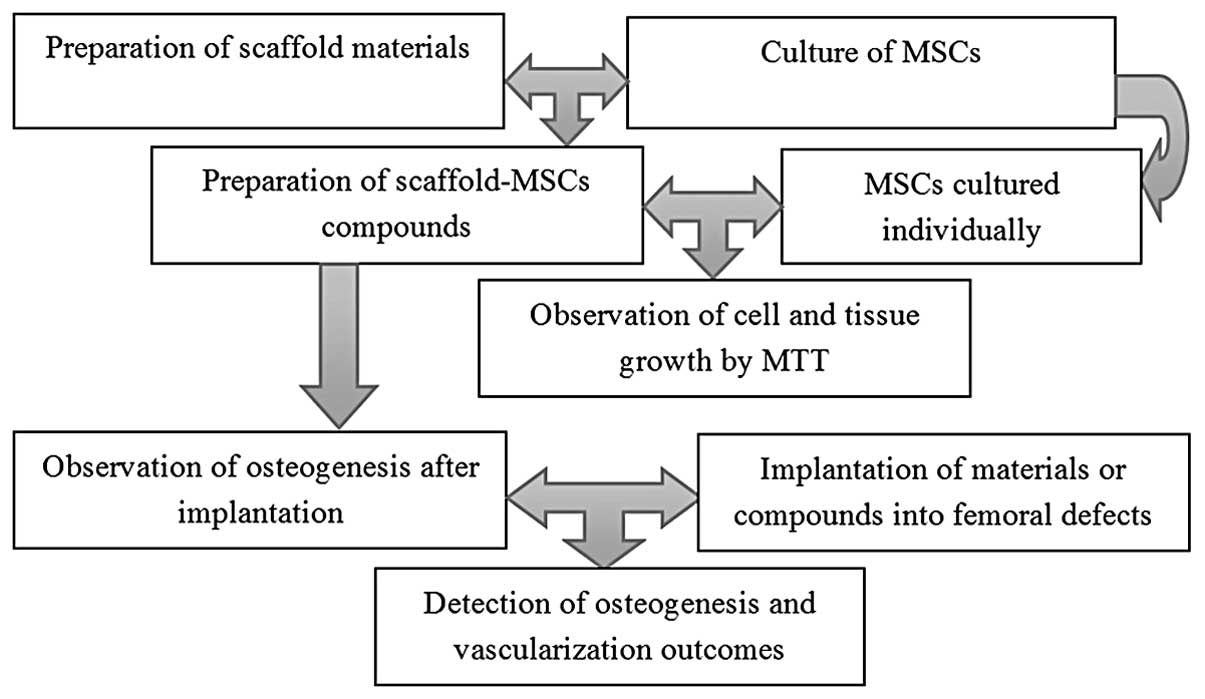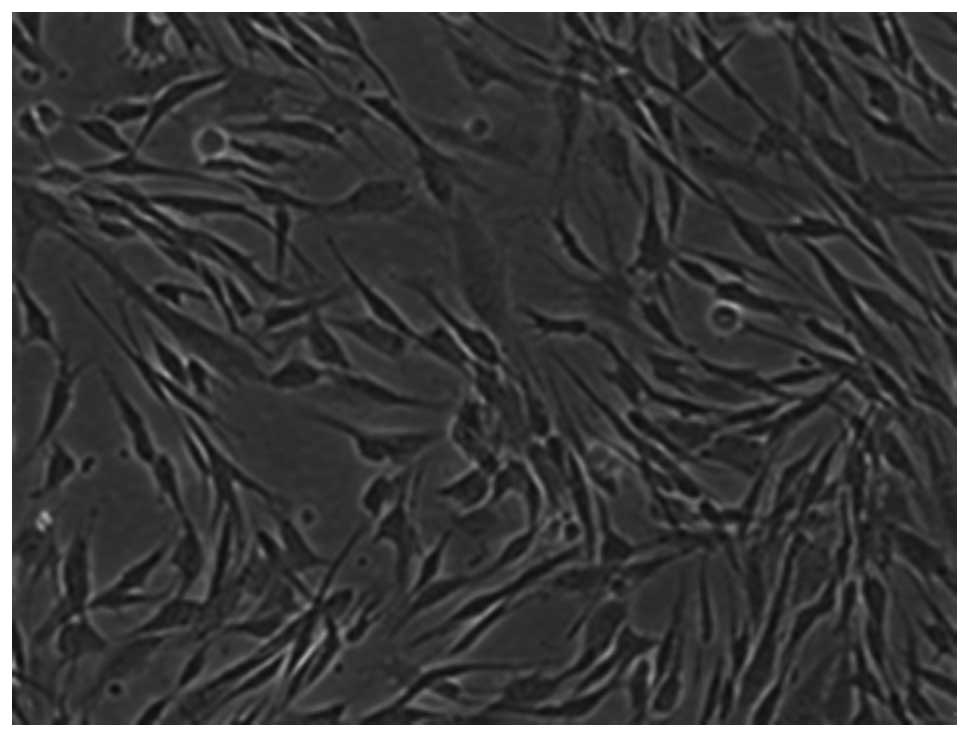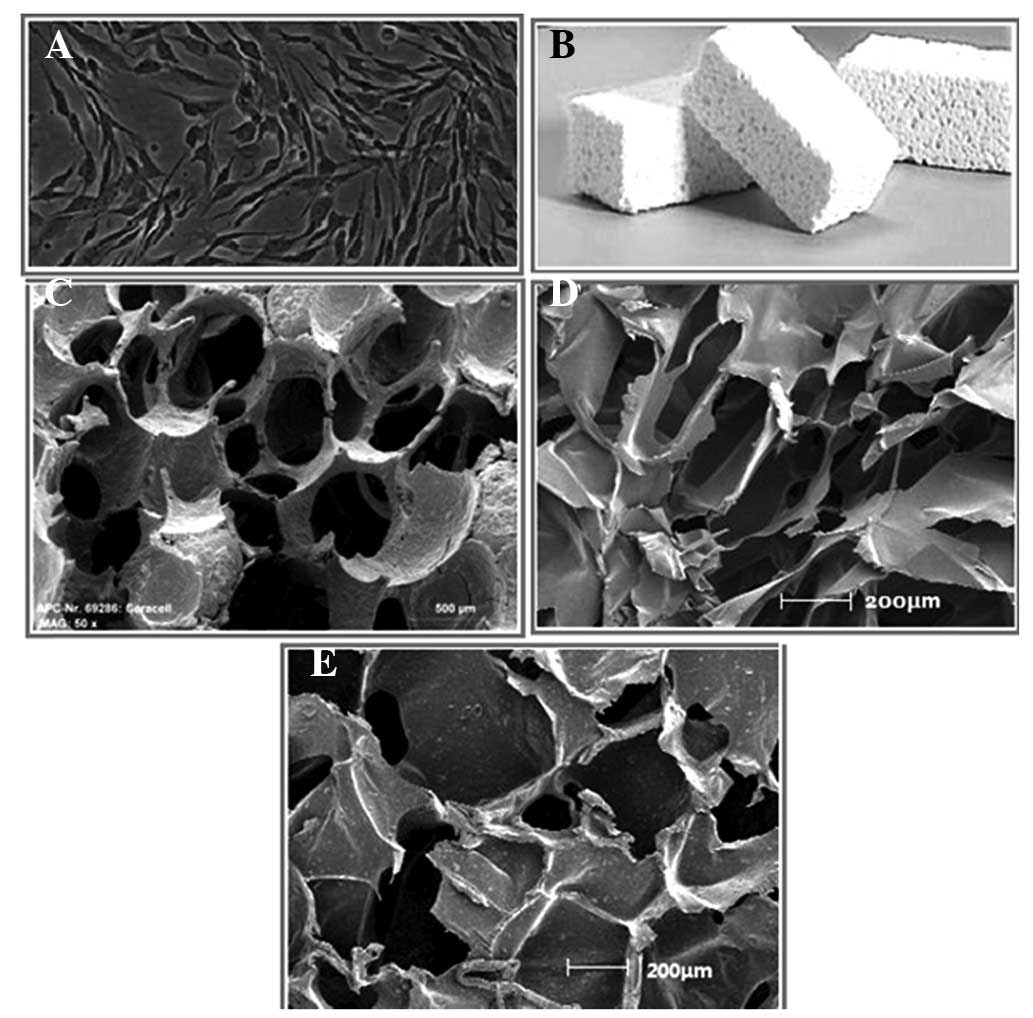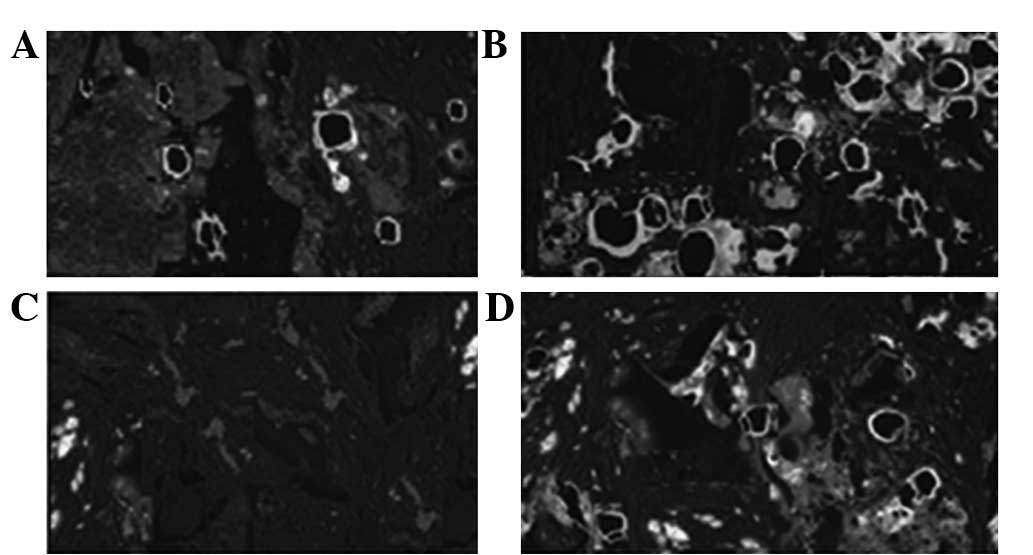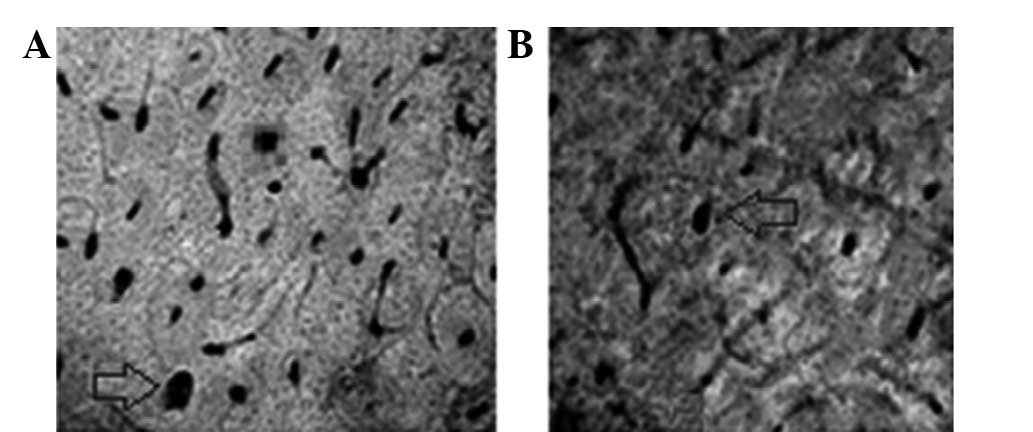|
1
|
Dimitriou R, Jones E, McGonagle D and
Giannoudis PV: Bone regeneration: current concepts and future
directions. BMC Med. 9:662011. View Article : Google Scholar : PubMed/NCBI
|
|
2
|
Bose S, Roy M and Bandyopadhyay A: Recent
advances in bone tissue engineering scaffolds. Trends Biotechnol.
30:546–554. 2012. View Article : Google Scholar : PubMed/NCBI
|
|
3
|
Muschler GF, Nakamoto C and Griffith LG:
Engineering principles of clinical cell-based tissue engineering. J
Bone Joint Surg Am. 86-A:1541–1558. 2004.PubMed/NCBI
|
|
4
|
Muschler GF, Raut VP, Patterson TE, Wenke
JC and Hollinger JO: The design and use of animal models for
translational research in bone tissue engineering and regenerative
medicine. Tissue Eng Part B Rev. 16:123–145. 2010. View Article : Google Scholar
|
|
5
|
Tasso R, Fais F, Reverberi D, Tortelli F
and Cancedda R: The recruitment of two consecutive and different
waves of host stem/progenitor cells during the development of
tissue-engineered bone in a murine model. Biomaterials.
31:2121–2129. 2010. View Article : Google Scholar
|
|
6
|
Yeatts AB and Fisher JP: Bone tissue
engineering bioreactors: dynamic culture and the influence of shear
stress. Bone. 48:171–181. 2011. View Article : Google Scholar
|
|
7
|
Yilgor P, Tuzlakoglu K, Reis RL, Hasirci N
and Hasirci V: Incorporation of a sequential BMP-2/BMP-7 delivery
system into chitosan-based scaffolds for bone tissue engineering.
Biomaterials. 30:3551–3559. 2009. View Article : Google Scholar : PubMed/NCBI
|
|
8
|
Mouriño V and Boccaccini AR: Bone tissue
engineering therapeutics: controlled drug delivery in
three-dimensional scaffolds. J R Soc Interface. 7:209–227. 2010.
View Article : Google Scholar :
|
|
9
|
Holzwarth JM and Ma PX: Biomimetic
nanofibrous scaffolds for bone tissue engineering. Biomaterials.
32:9622–9629. 2011. View Article : Google Scholar : PubMed/NCBI
|
|
10
|
Yamada Y, Nakamura S, Ito K, et al:
Injectable bone tissue engineering using expanded mesenchymal stem
cells. Stem Cells. 31:572–580. 2013. View Article : Google Scholar
|
|
11
|
Bi ZG, Han XG, Fu CJ, Cao Y and Yang CL:
Reconstruction of large limb bone defects with a double-barrel free
vascularized fibular graft. Chin Med J (Engl). 121:2424–2428.
2008.
|
|
12
|
Noaman HH: Management of upper limb bone
defects using free vascularized osteoseptocutaneous fibular bone
graft. Ann Plast Surg. 71:503–509. 2013. View Article : Google Scholar : PubMed/NCBI
|
|
13
|
Jiang Q, Reddy N and Yang Y:
Cytocompatible cross-linking of electrospun zein fibers for the
development of water-stable tissue engineering scaffolds. Acta
Biomater. 6:4042–4051. 2010. View Article : Google Scholar : PubMed/NCBI
|
|
14
|
Gyawali D, Nair P, Zhang Y, et al: Citric
acid-derived in situ crosslinkable biodegradable polymers for cell
delivery. Biomaterials. 31:9092–9105. 2010. View Article : Google Scholar : PubMed/NCBI
|
|
15
|
Kuo YC and Yeh CF: Effect of
surface-modified collagen on the adhesion, biocompatibility and
differentiation of bone marrow stromal cells in
poly(lactide-co-glycolide)/chitosan scaffolds. Colloids Surf B
Biointerfaces. 82:624–631. 2011. View Article : Google Scholar
|
|
16
|
Amini AR, Laurencin CT and Nukavarapu SP:
Differential analysis of peripheral blood- and bone marrow-derived
endo-thelial progenitor cells for enhanced vascularization in bone
tissue engineering. J Orthop Res. 30:1507–1515. 2012. View Article : Google Scholar : PubMed/NCBI
|
|
17
|
Sun X, Su J, Bao J, et al: Cytokine
combination therapy prediction for bone remodeling in tissue
engineering based on the intracellular signaling pathway.
Biomaterials. 33:8265–8276. 2012. View Article : Google Scholar : PubMed/NCBI
|
|
18
|
Zhao J, Luo C, Han W, Tu M, Zeng R, Cha Z
and Zhou C: Fabrication and properties of
poly(L-lactide)/hydroxyapatite/chitosan fiber ternary composite
scaffolds for bone tissue engineering. J Polymer Eng. 32:283–289.
2012. View Article : Google Scholar
|
|
19
|
Pan L, Pei X, He R, Wan Q and Wang J:
Multiwall carbon nanotubes/polycaprolactone composites for bone
tissue engineering application. Colloids Surf B Biointerfaces.
93:226–234. 2012. View Article : Google Scholar : PubMed/NCBI
|
|
20
|
Higuita-Castro N, Gallego-Perez D,
Pelaez-Vargas A, et al: Reinforced Portland cement porous scaffolds
for load-bearing bone tissue engineering applications. J Biomed
Mater Res B Appl Biomater. 100B:501–507. 2012. View Article : Google Scholar
|
|
21
|
Ji Y, Xu GP, Zhang ZP, Xia JJ, Yan JL and
Pan SH: BMP-2/PLGA delayed-release microspheres composite graft,
selection of bone participate diameters, and prevention of aseptic
inflammation for bone tissue engineering. Ann Biomed Eng.
38:632–639. 2010. View Article : Google Scholar : PubMed/NCBI
|
|
22
|
Clarke SA, Walsh P, Maggs CA and Buchanan
F: Designs from the deep: marine organisms for bone tissue
engineering. Biotechnol Adv. 29:610–617. 2011. View Article : Google Scholar : PubMed/NCBI
|
|
23
|
Alge DL, Bennett J, Treasure T,
Voytik-Harbin S, Goebel WS and Chu TM: Poly(propylene fumarate)
reinforced dicalcium phosphate dihydrate cement composites for bone
tissue engineering. J Biomed Mater Res A. 100:1792–1802. 2012.
View Article : Google Scholar : PubMed/NCBI
|



